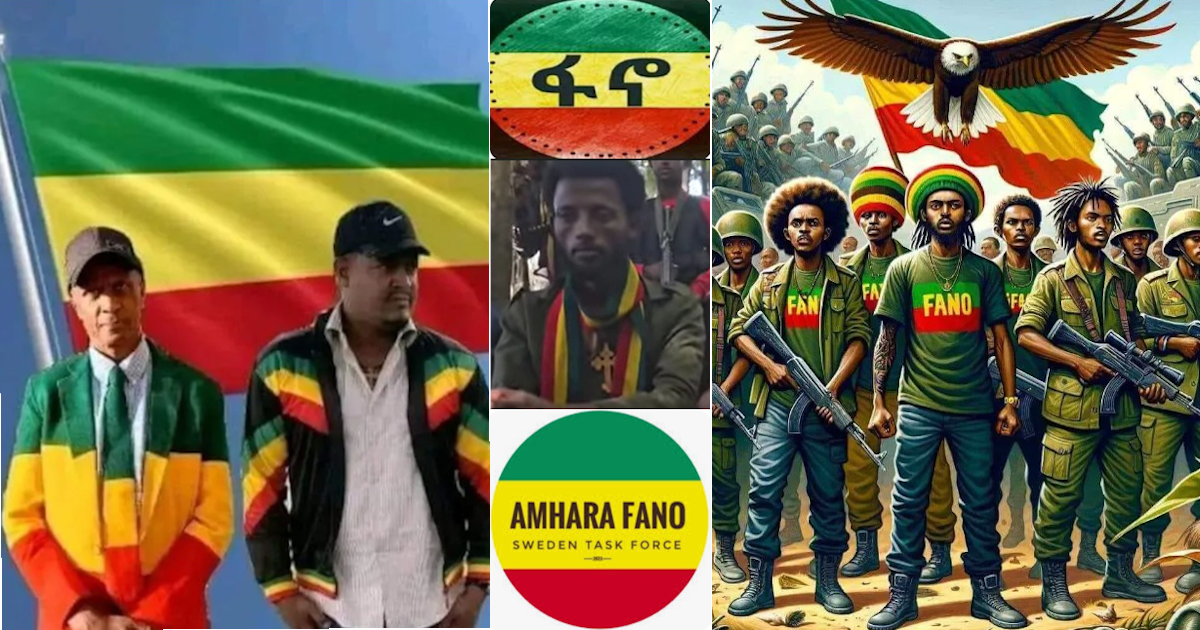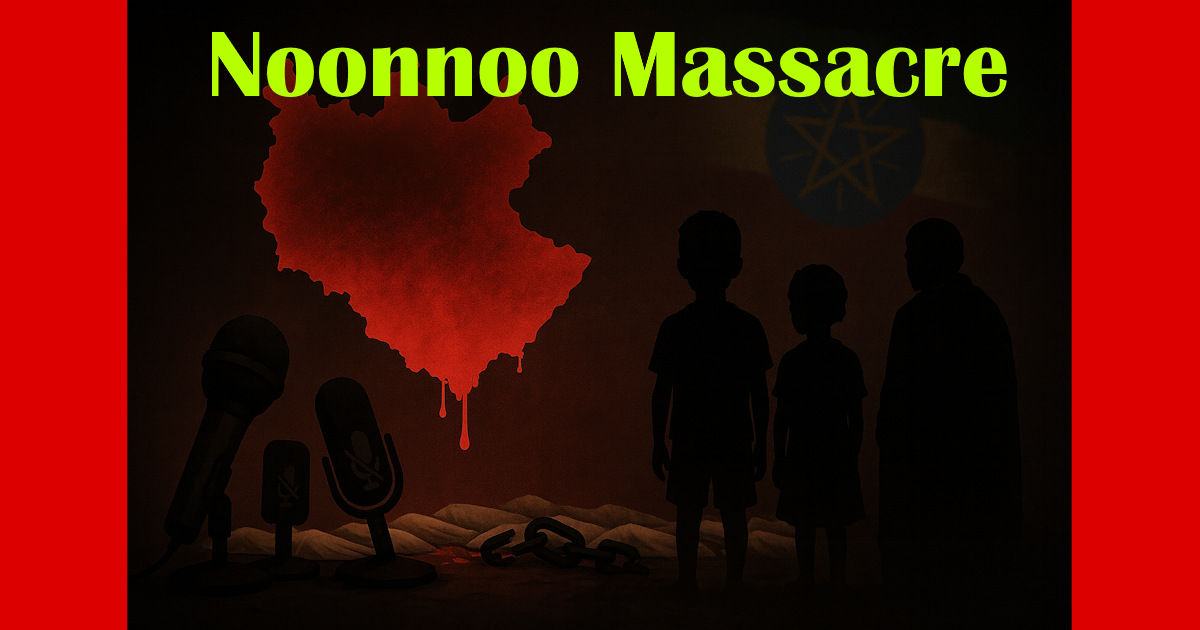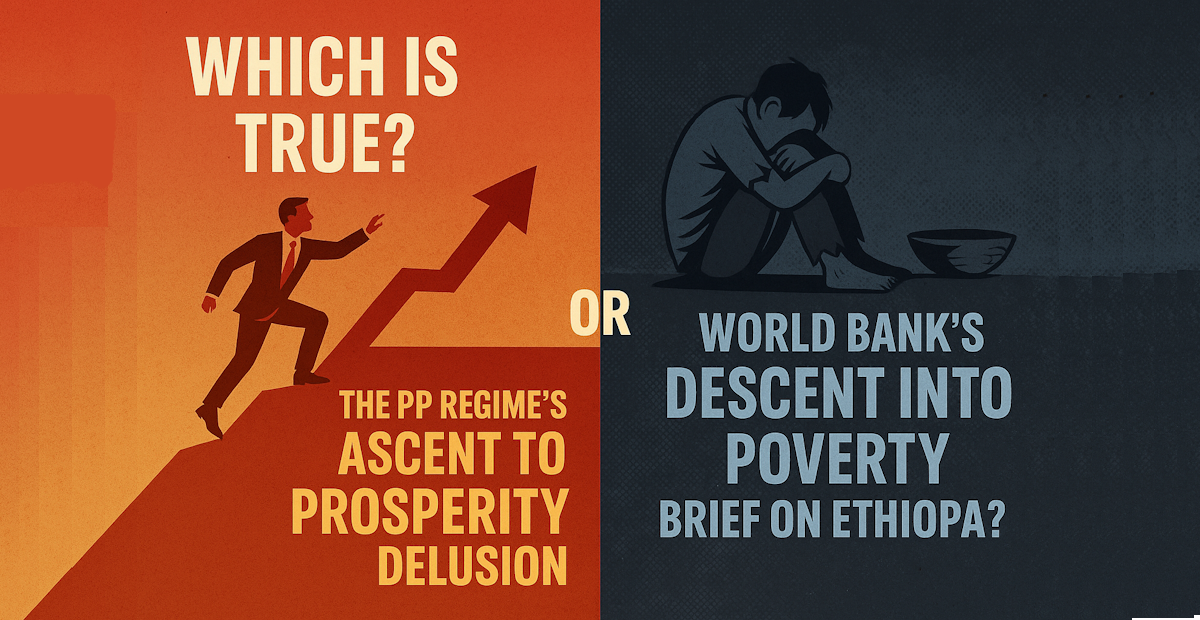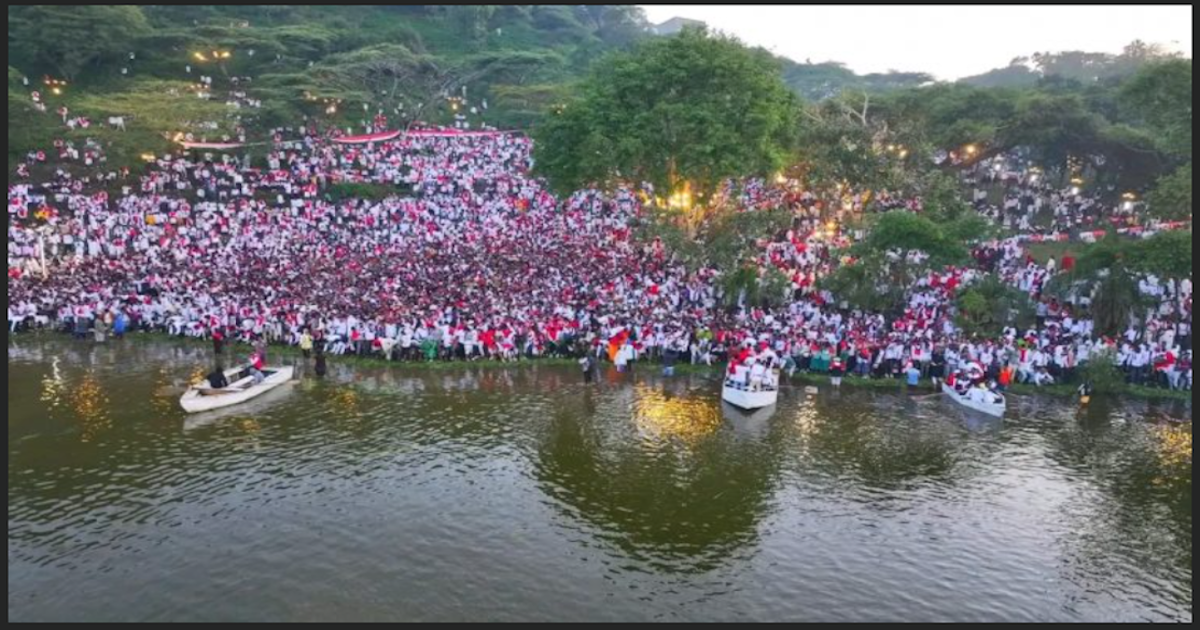The Oromo People Demand a Prerequisite for the Abbuu Seeraa Airport Project
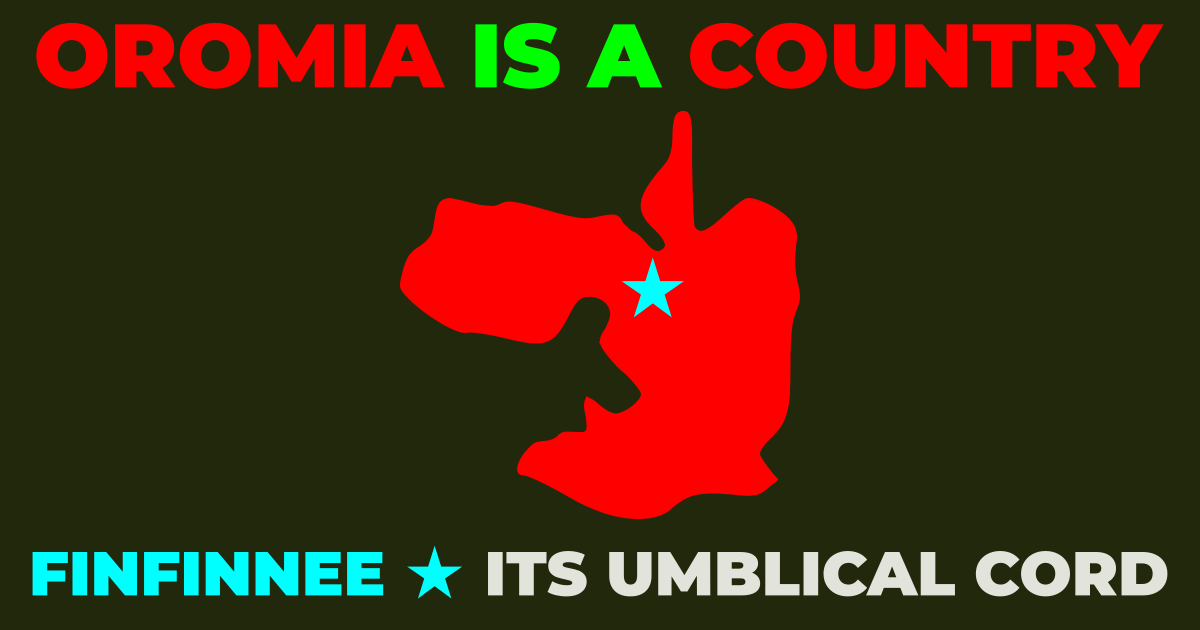
Prefer listening? Play the audio of full article.
The Tranquil Indigenous People
Before colonization and forced annexation, indigenous peoples thrived across the globe — civilizations, cultures, and ways of life intricately woven with their environments over thousands of years. They were not waiting to be “discovered”; they were living fully, imagining, governing, trading, and sustaining themselves with ingenuity that outsiders barely understood.
Then came colonization and forced annexation — a violent tide, not a polite meeting of strangers.
It was brutal conquest, fueled by insatiable greed for land, resources, and domination. It clothed itself in the arrogance of “civilizing missions,” casting indigenous peoples as primitive obstacles rather than recognizing them as the masters of sustainability, diplomacy, and deep-rooted wisdom they were. Indigenous Knowledge.
The catastrophic consequences are well documented: land theft, forced removals, cultural erasure, disease, massacres, and policies of forced assimilation. Sacred sites desecrated, languages outlawed, children stolen — either to be sold into slavery or brainwashed into tools against their own people.
And yet — colonization never truly conquered the indigenous spirit.
Across continents, indigenous peoples adapted, resisted, survived, and reimagined their futures. Today, they are reviving languages, reclaiming lands, defending their environments, and breathing new life into ancient traditions.
Their stories are not just of victimhood. They are testimonies of fierce resilience and unstoppable creation.
They were silenced — but they answered back. They are still answering.
The Oromo Case: Over a Century of Endurance
The Oromo, the indigenous people of Oromia, are no different.
The struggle that began with Abyssinian annexation of native Oromo lands continues unabated to this day — only now, ironically, some of the so-called “Oromo” politicians who rose to power in 2018 have taken the baton of oppression and are abusing and disrespecting the Oromo and Oromia with the same zeal as their predecessors. Their brutal internal war to cling on to power surpasses that of the colonial conquest.
It is an irony of history that rural Oromo life preserved much of Oromo culture and tradition. But urbanization — that supposed “progress” — has been a tool of erasure.
For the Oromo, urbanization has never meant opportunity.
It has meant land theft, displacement, marginalization. It has meant being pushed to the margins — economically, politically, socially — while outsiders flood in and prosper.
Historically, towns like Finfinnee were founded not for the Oromo, but for the settlement of the rifle-bearers, aka Nafxanyaas— instruments of conquest. Even the Amharic word “ketema” for “town” is laden with this colonial connotation: a garrison, a fort to defend conquest, not a home for the indigenous.
Urbanization in Oromia has overwhelmingly meant the settlement of outsiders, not the empowerment of the Oromo people.
Name one urban development in over a century that genuinely uplifted the Oromo. None, if you look closely at all the towns up and down in Oromia.
Let us focus for a moment on Finfinnee’s recent expansion.
Abbaadhoo, Ayaat, Boolee Araabssaa, Boolee Bulbulaa, Boolee Warraganuu, Galaan, Garjii, Gooroo, Jamoo, Laga Xaafoo, Labuu, Qaaliittii, Shaggar City — the list goes on.
Where are the native Oromos today who were evicted to make way for these urban developments? Did they achieve social mobility within these expanding towns? Certainly not.
This is but another chapter in an over-a-century-long process — a process the Oromo call Calii Tuulamaa: the systematic disappearance and erasure of the Tuulama Oromo, the indigenous people who once inhabited the broad heartland of central Oromia.
Soon, if the airport project proceeds as planned, Abbuu Seeraa will be added to this tragic list — swallowed by urbanization and most likely subsumed under Bishoftu’s administration.
And with it will come more displacement, more disruption, more loss — a continuation of the very same pattern we exposed in our recent editorial.
And if one needs an earlier example of this devastation, think of the Boolee Eekkaa communities. Where are they now?
Evicted 63 years ago when the original Boolee International Airport was first constructed on their communal lands, their story stands as a haunting reminder: airports may serve the nation, but they must not erase the people whose lands give them ground to rise.
Every expansion has meant more Oromo land lost, more Oromo communities evicted, more Oromo livelihoods destroyed — and mass in-migration from elsewhere, fundamentally altering the region’s social fabric.
And today, the tragedy is poised to repeat itself — on an even grander, more devastating scale.
Abbuu Seeraa: Development or Dispossession?
As a side note, we take immense pride in our editorial published just four days ago on this very issue — an editorial that, by all indications, struck a powerful chord. The response was extraordinary: our website traffic, particularly from Ethiopia, surged more than twentyfold compared to the daily average. It is a testament not to us alone, but to the urgency and righteousness of the Oromo people’s cause — a cause that can no longer be ignored.
The Abbuu Seeraa airport project is touted as a “developmental” leap — the largest futuristic airport in Africa. But for the Oromo people, it is nothing more than urbanization by another name. The same pattern, the same betrayal, the same ruthless dispossession cloaked in “progress”.
If we need a grim preview of what awaits Abbuu Seeraa, we need look no further than a nearby town of Bishoftu. Once a gem of Oromia, Bishoftu is being systematically hollowed out under the so-called “corridor development” plans. Abbuu Seeraa communities — the rightful custodians of their ancestral land — now face eviction, cultural erasure, and economic death.
Who will live in the new Bishoftu after the grand plans unfold?
Not the native Oromo.
Not even Oromos who, against all odds, have achieved some level of prosperity.
The dream of Bishoftu is being auctioned off to foreign buyers — Middle Eastern elites who sampled its pristine scenery, perfect weather, and Norwegian-like fjords and decided to stake their claims.
And what of the indigenous Oromo? Where will they go?
What will their lives look like in one year? Five years? Ten? Mark this warning.
Dispossession. Marginalization. Silence.
If we do not act today, the same fate that befell the Boolee Eekkaa community 63 years ago will become the reality for the people of Abbuu Seeraa.
The Prosperity Party (PP) regime does not care. To them, the people of Abbuu Seeraa are dispensable obstacles — not human beings with histories, hopes, and rights.
From the founding of Finfinnee as a garrison town over a century ago, to PM Abiy Ahmed’s extravagant dream palace quietly under construction in the sacred mountain forests of Eekkaa today, the pattern is unmistakable: Development is never for the Oromo, but destruction is.
It is development at the expense of the Oromo. No trickle-down benefits. No compensation for trauma.
Only erasure — again and again.
That is why we oppose it.
We do not oppose development.
We oppose developmental projects that come at the expense of the indigenous owners of the land — the Oromo people — and of Oromia itself.
Make no mistake: the Abbuu Seeraa project, like the Master Plan before it, reeks of expansionism shrouded in hidden agendas. It is a brick laid on the same road that has always led to Oromo disenfranchisement.
It is not paranoia to say this — it is historical pattern recognition. When politics is driven by ambition for conquest rather than partnership, suspicion is survival. It is wisdom.
Finally, for its subtle but significant relevance, we note this as a side observation:
Did you know that the usual suspects attempted to christen Abbuu Seeraa with a like-sounding name — “Ab Siraa,” meaning “Father’s (as in God’s) Work”? A cynical rebranding, designed to blur Oromo identity through linguistic deception, even as they are fiercely busy with their expansionist tactics.
Their audacity defies belief.
A Corridor Project in Disguise: Expansionists’ Pipe Dream
Urbanization has long been weaponized as a systemic tool of Oromo marginalization — not a byproduct of growth, but an instrument of displacement. Yet in recent decades, a more sinister evolution has emerged:
urbanization as territorial annexation.
The unchecked “Master Plan” to expand Finfinnee revealed this strategy in stark clarity. Expansionists are working tirelessly to build a “corridor” from Finfinnee to another region — constructing a physical and demographic bridge with the ambition of one day claiming Finfinnee itself. The logic is simple, if brutal: connect first, claim later.
Whether perceived or real, the Oromo people’s vigilance is not paranoia — it is survival, it is wisdom learned through bitter history. Every new construction project near Finfinnee raises legitimate alarms. And for good reason.
There is evidence of shantytown settlements deliberately planted in river corridors to stitch Laga Xaafoo closer to the Amhara region.
There were condominium mega-projects aligned to make territorial reconfiguration seamless.
The Master Plan was the blueprint for this ambition — and it was this very scheme that triggered the historic Oromo Protests of 2014–2018.
Today, when massive projects arise — whether “developmental” or otherwise — the Oromo people are right to question:
Development for whom?
Development toward what end?
Suspicion is not cynicism — it is informed pattern recognition.
It is a shield built by centuries of broken promises.
A Prerequisite for Abbuu Seeraa Airport: Restore Finfinnee to Oromia’s Rightful and Full Administrative Governance
No special statuses. No federal loopholes. No twilight zones.
Dispelling deep-rooted suspicion is not optional — it is a prerequisite.
If the government truly seeks partnership rather than conquest, it must move decisively to end all ambiguity around Finfinnee’s status.
The so-called “special interest” designation must be rescinded.
Finfinnee’s administration must be restored fully and unequivocally under Oromia’s constitutional authority — with no hidden exceptions, no backdoors, and no manufactured corridors designed to engineer territorial claims.
Eliminate every ambiguity, close every loophole, and extinguish every expansionist pipedream that dares to de-Oromize what is — and has always been — Oromo land.
Only then can projects like Abbuu Seeraa — and any future visions — hope to move forward on a foundation of trust, not betrayal.
The PP regime — today’s political chameleon — rose to power on the blood and sacrifice of the 2014–2018 Oromo Protests.
Promises were made. Promises were broken. But the Oromo people have not forgotten.
Today, we place before you — the Oromia regional government, the federal government of Ethiopia, and all those in the PP regime — one clear, non-negotiable demand:
Before a single brick is laid for the Abbuu Seeraa Airport, the federal government must formally, constitutionally, and unequivocally affirm Finfinnee as an Oromia-administered city — governed wholly by Oromia’s regional authority, free of the distortions of “special status” or federal override.
Not tomorrow.
Not in some ambiguous “framework.”
Today.
This is not a technical matter. It is a trust-building measure.
Across the world, from New Zealand’s recognition of Māori rights to Canada’s Indigenous land acknowledgements, genuine trust has begun only where states recognized hard truths first — not as a favor, but as a foundation for coexistence.
It is the only way to start healing a century of wounds. It is the only way to show that this time — this one time — the Oromo are not merely an afterthought in their own land.
Affirming Finfinnee’s rightful governance under Oromia would not erase history — it would acknowledge it. It would be a down payment on the justice that the Oromo people have waited for, fought for, and died for. It would dispel suspicions and show that promises are not just campaign slogans.
You say you are a government of reforms?
You say you respect the rights of nations and nationalities?
Then show us.
If you have backbone, if you have a shred of decency, if you have any respect left for the people whose sacrifice put you in office — implement this one core demand of the Oromo people:
Restore Finfinnee to Oromia’s full, rightful, constitutional governance.
Today.
Not tomorrow. Today.
This action is not for the Oromo people alone — they have always known Finfinnee is theirs. It is for the sake of legal certainty, constitutional clarity, and the closing of loopholes — to shut the door on the opportunists who lurk in the shadows, scheming to undermine Oromo rights.
Securing this restoration would clear the path for the Abbuu Seeraa Airport project to proceed with one major obstacle removed — replacing suspicion with trust, and opening a constructive future that honors the wellbeing, culture, traditions, heritage, and environment of the Oromo people.
There is no valid or justifiable reason to delay this restoration. Indeed, it was one of the promises that could — and should — have been fulfilled within weeks or months after assuming power in 2018.
Refusing to act now would be nothing short of an admission of ill intent — and would open the floodgates for the saboteurs who thrive on uncertainty to continue sowing division and sabotaging the Oromo people’s rightful aspirations.
We expect you to give this matter the full weight of importance and urgency it deserves — for the future of Oromia, for the trust of its people, and for the legitimacy of any project that dares to rise on their land.
And to the Oromo people:
our future will not be handed to us. It must be claimed — with unity, clarity, and unyielding resolve.
Abbuu Seeraa is not the final battle, but merely a chapter in the unfinished book of the Oromo people’s rightful quest — for language, for land, for dignity, for destiny.

